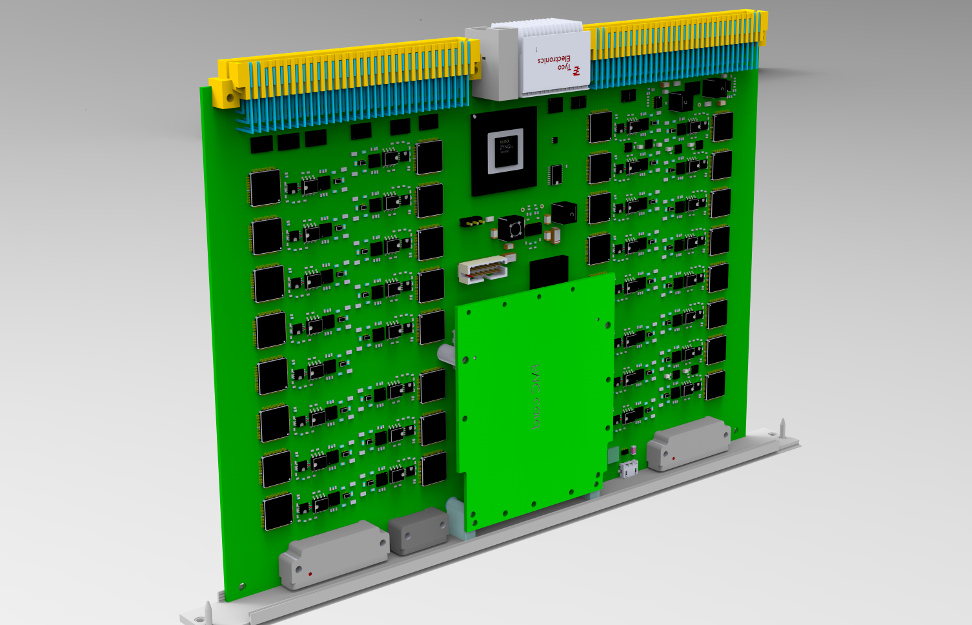
GB113: VME/VXS acoustic signal processor
- 6U VME form factor with 32 analog inputs. 24 bit Sigma Delta ADC running at up to 4MS/sec.
- Xilinx Zynq 7030 embedded processor. 512 MB DDR3 SDRAM, 64MB QSPI FLASH.
- VITA 57 FMC daughter card site.
- Multi-card synchronization allows creation of larger systems.
- Linux Software development kit. Open source HDK for custom FPGA core development.
Product Description
The GB113 is a 6U VME/VXS single board data acquisition and DSP module which enables a wide variety of acoustic and ultrasound signal processing functions, including active or passive sonar, vibration analysis, geophysics, and other test and measurement applications. The card features 32 analog input channels, which it converts to digital data with 24 bit resolution, at sample rates up to 4MHz. On board signal processing is provided by a Xilinx Zynq 7030 SoC, which includes two Arm A9 processors, as well as substantial programmable logic (PL) resources. The design includes the ability to precisely synchronize multiple GB113 cards, allowing systems to be expanded to support hundreds of channels. Anti-aliasing inherent in the Sigma-Delta converters minimizes analog signal conditioning elsewhere in the design: the analog front end includes only adjustable gain and two pole anti-alias filtering. All other processing is performed using the on board FPGA resources.
In the simplest sense, the GB113 can serve as a VME slave module, providing analog sensor interfaces to a single board computer, or a larger HPC system. The GB113 is also capable of operation as a stand-alone module, running bare metal code, or a custom Linux image such as Yocto.
The GB113 includes a high precision frequency synthesizer which allows the user to generate a sample clock of virtually any frequency, between 50kHz and 4 MHz, with sub-hertz precision. It can also accept an external clock for frequency coherent synchronization to peripheral equipment. When using the GB113, data acquisition may be performed in either capture or continuous